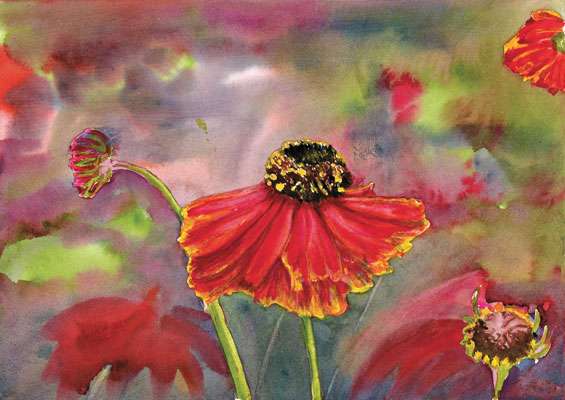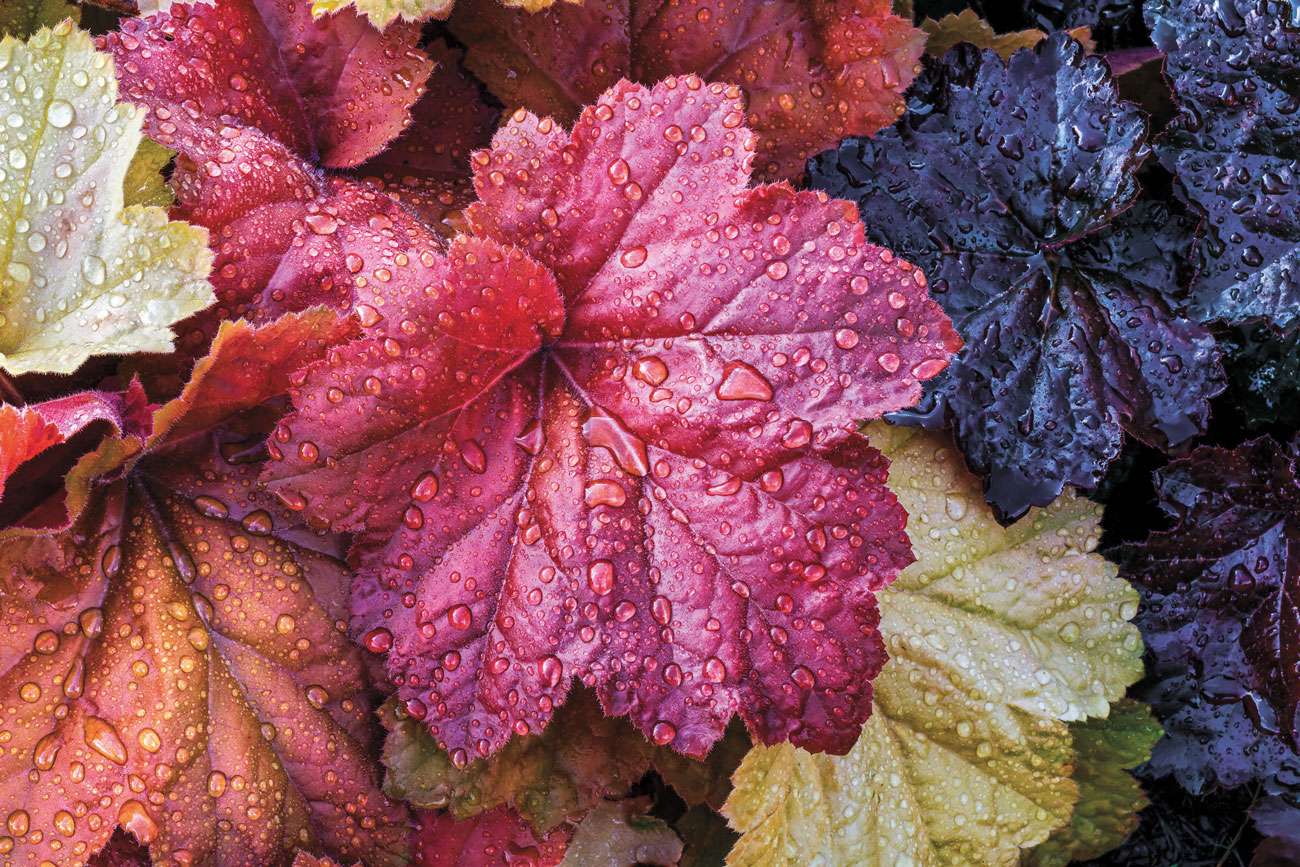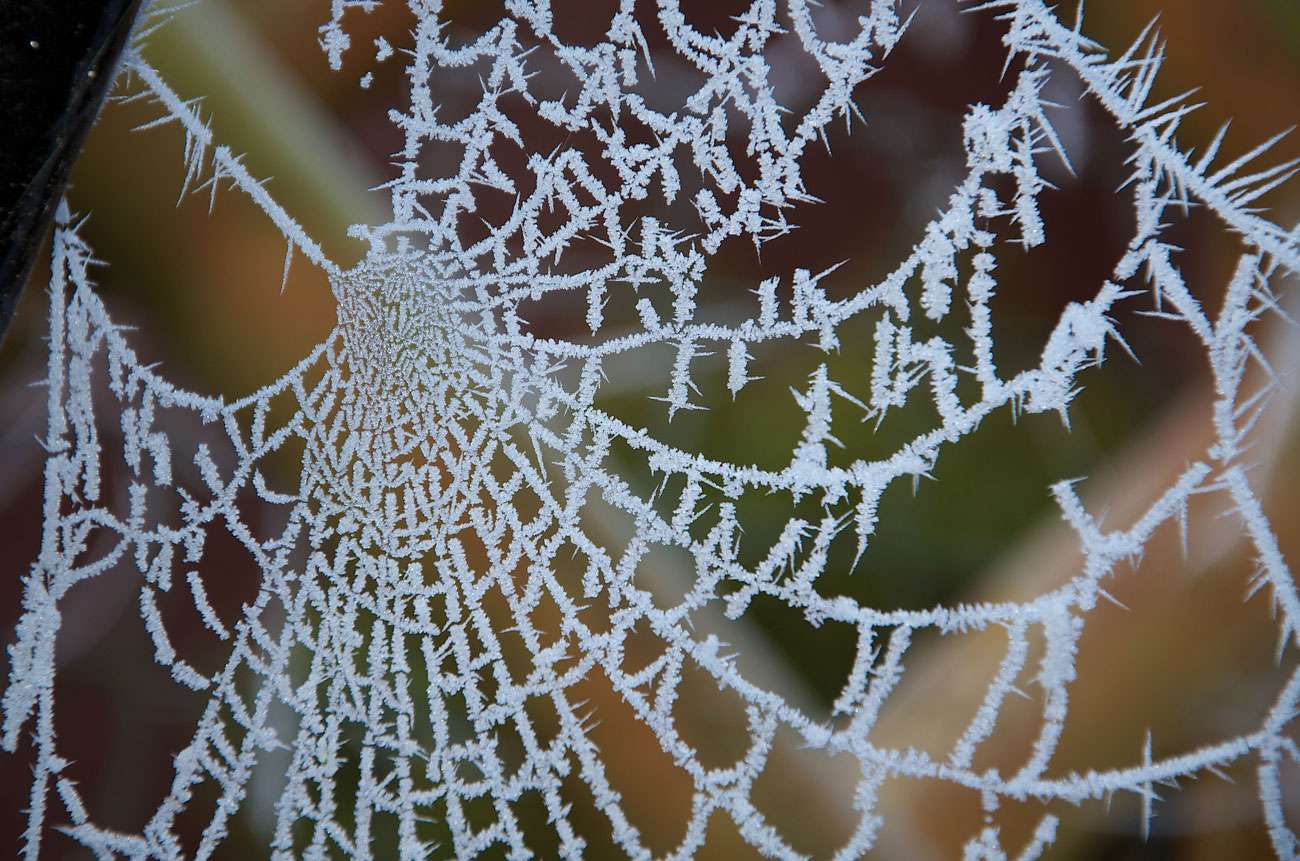
As I was walking this morning, the sun was shining and I could definitely feel the gentle warmth of its rays, which was fantastic. We have had a very mild winter so far, with a few sharp frosts and snow further north, but here we have the treats of winter flowering Jasmine and the first display of daffodils February Gold outside Notcutts, to welcome everyone to Cranleigh! We even have snowdrops, hellebores and hebes adding their spots of colour in the flower beds. This wonderful frosted spider’s web was in a neighbour’s hedge early on Sunday morning, still frosted and the strands are woven together so intricately.
Later this month I will start to cut back the old stems and seed heads of the perennials and clear the leaves to allow other bulbs to poke through the soil. You have to do this gently, to avoid damaging newly emerging shoots from the bulbs deep down in the soil. It really is such a lovely treat watching the garden come to life again. However, it is best to avoid walking on or cultivating wet or frozen soils, particularly clay soils, as this can lead to compaction. Also walking on frozen lawns can damage the grass – so use the paths instead for now!
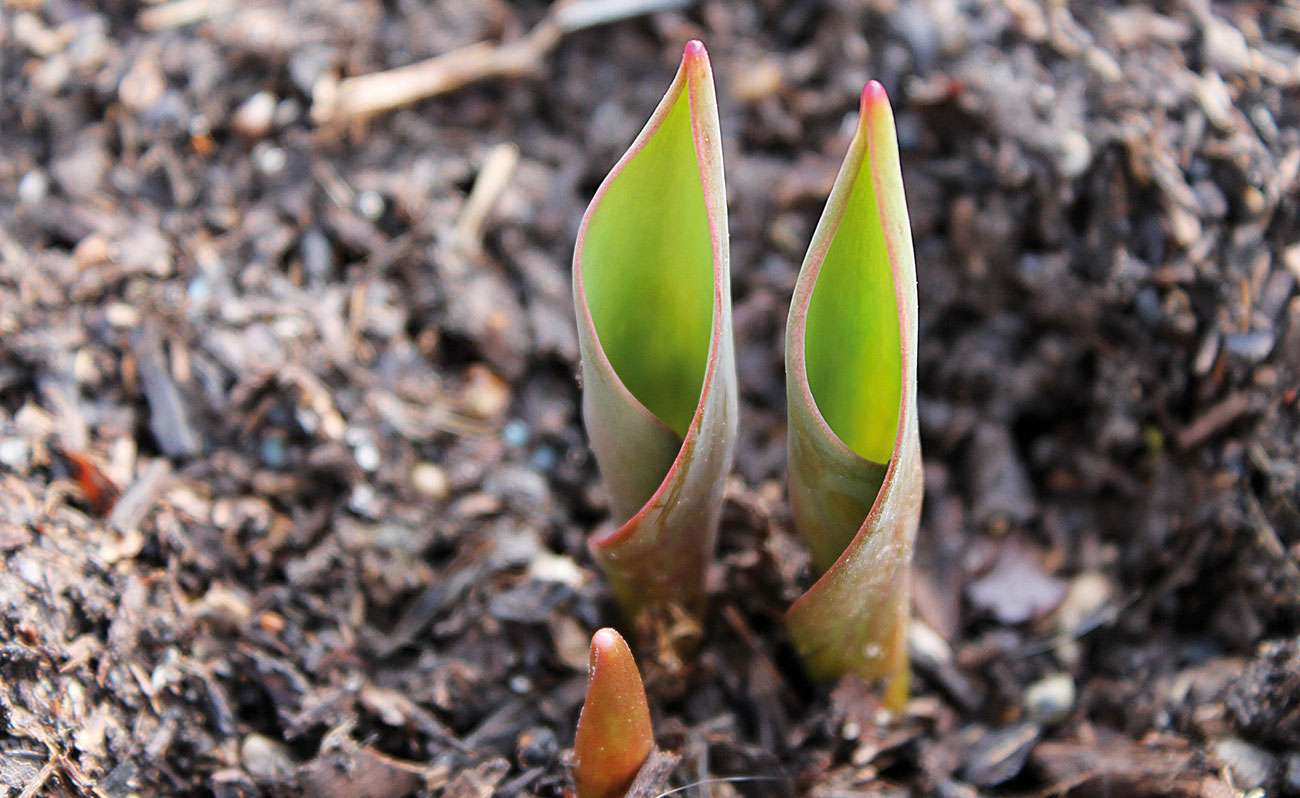
So, I am also using my spare time during the Covid crisis to repot and feed the house plants and pot up the dahlia tubers that were stored upside down in the greenhouse over winter – or recently purchased from a garden centre. The best way to pot up dahlias is to use good peat free compost enriched with slow release fertiliser. First put a layer of compost into a pot, which is large enough for all the branches of the tuber. Then pop in the tuber and firm more compost into the pot around the tubers making sure that the top of the tuber is level with the soil and the old stem pokes out above the surface. They should be kept in daylight and watered regularly but allowing the water to drain through, so it does not become waterlogged, otherwise the tubers will rot. Dahlias are a magnet for slugs, so they will need a scattering of slug pellets once the new shoots emerge.
My indoor plants are struggling, as I failed to feed them sufficiently during the winter and because of the lack of sunlight. So, again I use good peat free compost mixed with slow release granules. I remove the plant from the pot and shake off the soil ready which can be put on the compost heap. Then I clean the pot and put a layer of compost in the bottom. If the plant has become compacted, I get a bucket of warmish water and give the roots a good wash before placing it in the pot, firming cosy new soil around its roots, firming the surface down gently, then watering it and it’s ready for a healthier life again.
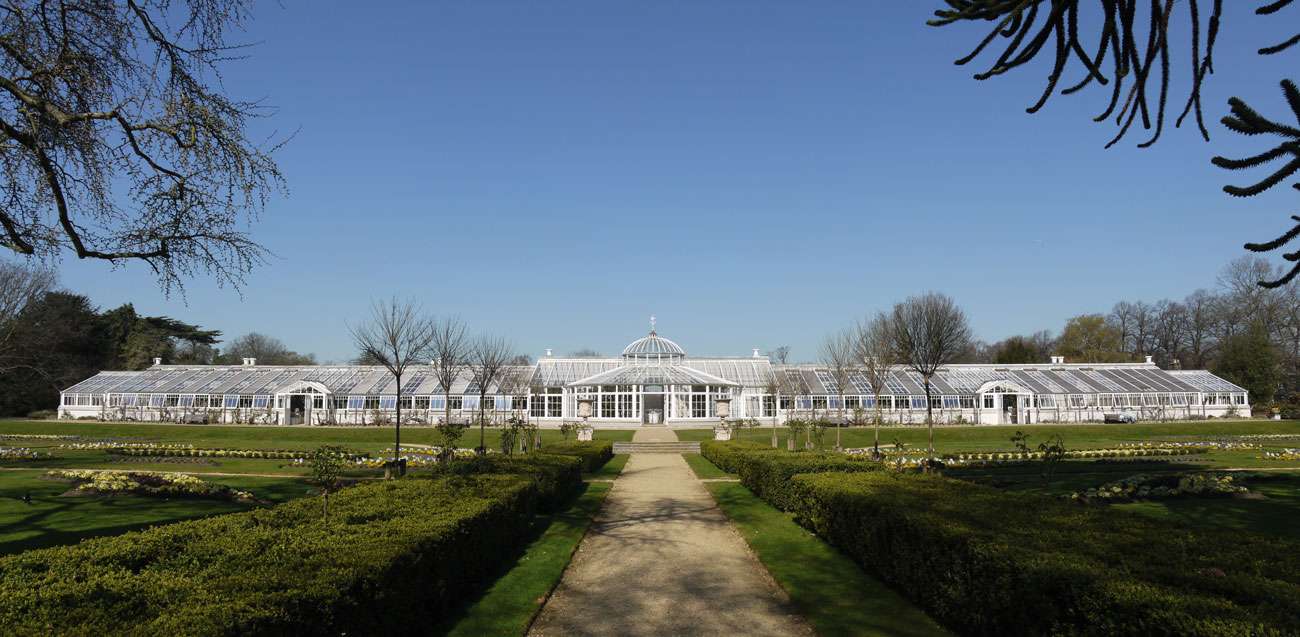
One of my favourite flowering shrubs is the camellia and there is a wonderful collection in the conservatory at Chiswick House in London. It was built in 1813 and at almost 100m long, it was the longest glasshouse yet built. Originally the glasshouse contained hothouse fruit but in 1828 the exciting, newly imported camellia plants arrived from China. There are an amazing variety of camellias available, which flower from December until May. Camellia ‘Cornish Snow’ can flower as early as December and C. ‘Marshall’ bears scented, pink-striped flowers in February. They benefit from being planted in part shade away from early morning sunshine, as they originate from shady mountain sides in China and the delicate petals can be frosted and ruined. They thrive best in moist but well drained acidic soil, especially when well-rotted leaf litter or bark chippings are added as a mulch. They also benefit from a scattering of tea leaves as a compost!
Do enjoy getting back out into the garden and seek out the spring bulbs and delicate scents.
Gill Ford




